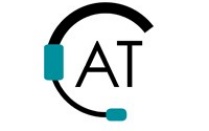Case Study: Lessons Learned in Selecting Distribution Channels and Promotion Strategies for Products for Baby Boomers
James A. Leahy, University at Buffalo, Center on Knowledge Translation for Technology Transfer
Abstract
It is especially important to consider both distribution and promotion strategies when you are going after a new customer segment, releasing a new product, or looking for ways to aggressively grow a business targeted at a specific consumer demographic.
Background
The distribution channel along with the promotion strategy selected is of great importance in ensuring a products successful introduction in the marketplace.
Distribution Channels
- Wholesaler/Distributer
- Direct/Internet
- Direct/Catalog
- Direct/Sales Team
- Value-added Reseller
- Consultant
- Dealer
- Retail
- Sales Agent/Manufacturing representative
- Etc.
Target market: Baby Boomer Generation
Method
- Born 1946-1964
- 23.7% of the total population (estimated 76.4 million people)
- Financially relying on support from the government and their children to support retirement
- Want to age in place and are seeking products to make their lives easier
Presented through three case studies of products developed for the Baby Boomer generation
Case 1: Lids off automatic jar opener
Distribution: Mainstream Channel
- Distribution began through an Internet product launch as a preliminary ‘testing of the waters’ on consumer purchase intent and price point.
- Follow up distribution channels were through mainstream retailers currently selling small home kitchen appliances (Wal-Mart, Target, etc.)
